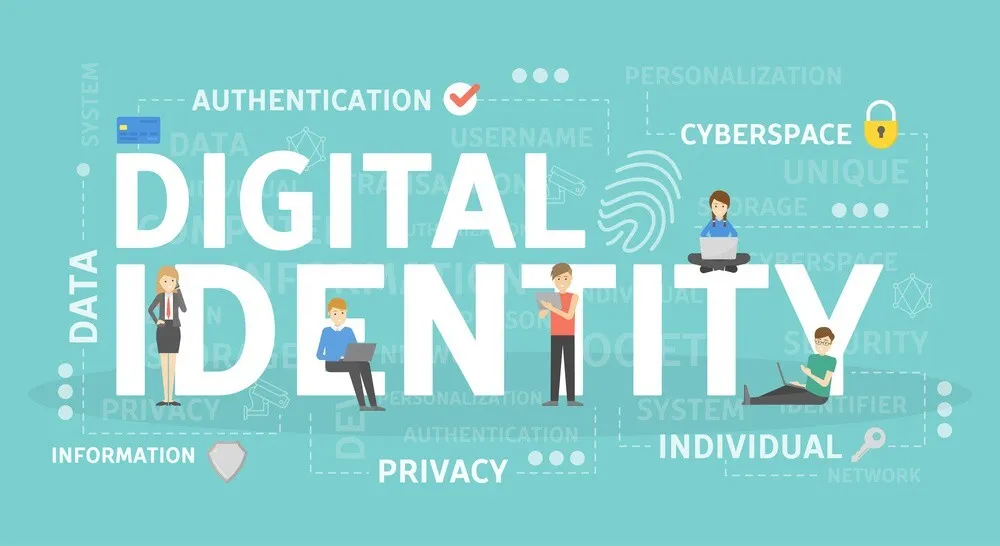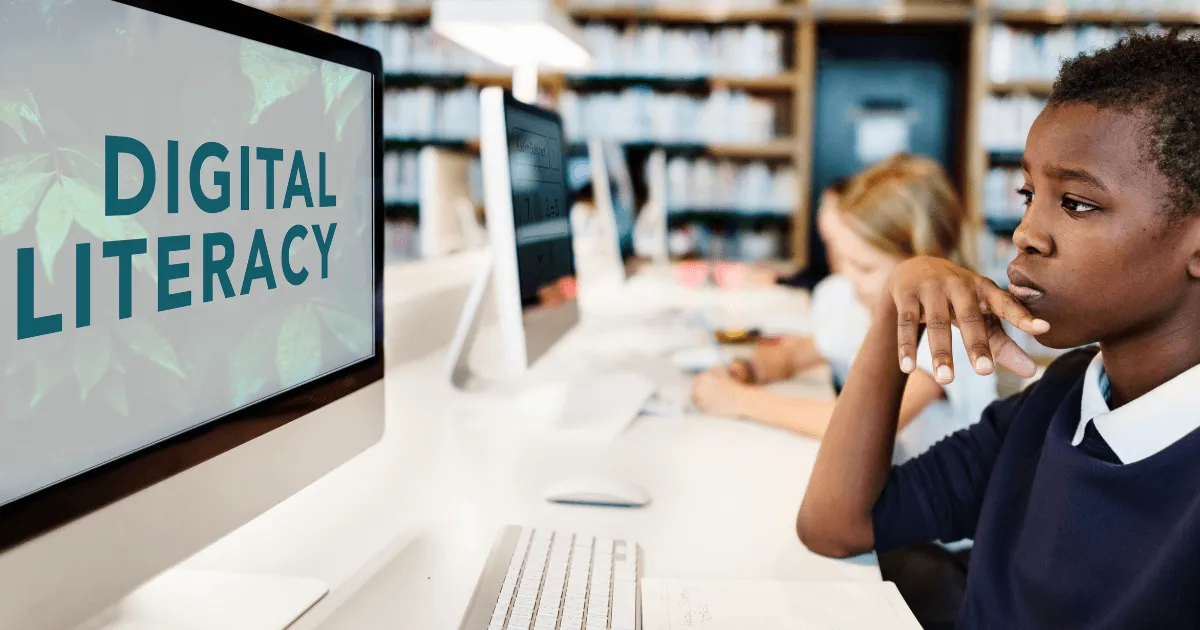
Introduction
In our digital age, understanding the connection between digital identity and digital literacy is crucial. These concepts shape how we interact online and influence everything from privacy to communication. Digital literacy equips us with skills to navigate this landscape, ensuring we make informed decisions about our digital identity. This article explores the implications of digital identity, such as cyberbullying and data breaches, and how digital literacy offers solutions to these challenges. By understanding this relationship, we can confidently and responsibly engage in the digital world.
Digital identity refers to the way individuals are represented online, including personal information, activities, and interactions. In other words, it's how people perceive our reputation on the internet.
Digital literacy on the other hand is the ability to communicate, navigate, and perform online activities with skill and efficiency. In short, it's the ability to be an effective digital citizen.
Digital identity and digital literacy are close related, in fact, they work together and depend on each other. Digital literacy is necessary to create a positive digital while a positive digital identity can inspire people to become digital literate.
Implications of digital identity
The implications of digital identity are the results or effects that arise from how people represent themselves and communicate online, some of these implications include:
1. Cyberbullying: Cyberbullying is one of the implications of digital identity where people use the internet space to harass, intimidate or harm others. Cyberbullies often attack an individual digital identity by spreading lies or false information about the individual in order to tarnish their reputation online. This type of bullying takes advantage of the distance provided by the internet, making it easy for bullies to hide their identity.
2. Targeted advertisement: Targeted advertisement is a marketing strategy that uses information from one's digital identity to create ads that meet your interest. Here is how it works; Companies and organizations collect information about our online activities, like which websites we visit and what we search for Based on this information, they create a profile of our digital identity, which includes our interests and hobbies. They then group people with similar profiles together and use algorithms to decide which ads to show them. The aim of the targeted advertisement is to create ads that are appealing and increase the chances of you clicking them and making a purchase. While some people might appreciate the fact that ads align with their interests, others might see it as an invasion of their digital identity to manipulate their choices.
3. Data or privacy breach: When a data or privacy breach occurs, the information of an individual could be stolen and used in ways that cause harm. This could include things like identity theft, where the individual's personal information is used to open accounts or make purchases in their name. It could also include things like online harassment, where their personal information is used to find and target them online. In some cases, the information could be used to manipulate or influence the individual in ways that are harmful.
4. Digital personae: On social media, human beings display the high-quality elements of their lives and miss the hard moments. This could make others feel horrific about their very own lives and assume they may be not as correct as others. It is like watching a film with most effective the thrilling parts and now not the ordinary elements. This can make us accept as true with that everybody else is constantly happy and a success, which isn't always proper. Searching at these perfect photographs could make us experience like our personal lives are not true enough. We'd want we had the identical interesting stories or achievements as others. But we don't see the normal struggles and problems they go through. This way of showing most interesting parts on social media can make us feel like losers.
5. Digital divide: For those who lack internet access or have limited technological literacy, the concept of a digital identity remains elusive. Without the ability to create and manage digital identities, individuals are excluded from the benefits of the digital realm. They may be unable to participate in online educational opportunities, access telehealth services, or engage in digital financial transactions. As more essential services transition to online platforms, the absence of a digital identity further perpetuates the divide, leaving disadvantaged populations further behind.
Looking at the bright side of digital identity, digital identity offers several positive aspects such as
1. Global connectivity: Global connectivity through digital identity enables people to connect,
Global connectivity through digital identity enables people to connect, communicate,work, collaborate, and do business transactions worldwide via online platforms. Digital identity encourages empowerment and cross-border interactions, fostering communication, cultural exchange, education, and collaboration among individuals regardless of their physical locations.
2. Digital services: Digital identity enables a wide array of online services, personalized based on your interests. It offers convenient and easy access to services such as education, work, entertainment, banking, shopping, communication, and healthcare, all from the comfort of your digital presence.
3. Improving IoT: The Internet of Things (IoT) has redefined connectivity, automating our daily lives through interconnected devices. Digital identities play a crucial role in securing and managing these devices remotely, streamlining access, and enhancing security. They enable personalized control, real-time monitoring, data analysis, and emergency response. Digital identities also ensure energy efficiency, cost savings, and integration with other services. However, challenges like cybersecurity and interoperability must be addressed. Embracing digital identities in IoT management opens the door to a connected future of convenience, efficiency, and improved experiences.

Needs for Digital Literacy and How It Offers Solutions to the Implications of Digital Identity
The need for digital literacy arises due to the various implications of digital identity, digital literacy offers solutions or ideas on how to manage these implications. Digital literacy is like a tool that helps us navigate the digital world. It gives us the knowledge and skills to use the internet in a smart and safe way. Here are some ways digital literacy can improve the implications of digital identity:
1. Cyberbullying Awareness and Prevention: With the rise of cyberbullying as an implication of digital identity, digital literacy empowers individuals to recognize signs of cyberbullying, adopt protective measures, and support others who may be affected. Understanding how to report and address instances of online harassment is essential for creating a safer online environment.
2. Responsible Engagement with Targeted Advertisements: Digital literacy enables users to comprehend the mechanisms behind targeted advertisements, including the collection and use of personal data. Individuals with digital literacy skills can make informed decisions about their online activities and manage their digital identity to minimize exposure to invasive marketing practices.
3. Data Privacy and Security: The risk of data breaches Emphasizes the importance of digital literacy in safeguarding personal information. Understanding how to set privacy settings, recognize phishing attempts, and implement strong password practices helps individuals protect their digital identities from unauthorized access and misuse.
4. Navigating Digital Personae: Digital literacy empowers individuals to critically assess the digital personas presented on social media platforms. By recognizing the curated nature of online content, individuals can cultivate a healthy perspective, avoiding feelings of inadequacy or low self-esteem that may arise from comparing their lives to the idealized versions displayed by others.
5. Bridging the Digital Divide: In addressing the digital divide, digital literacy serves as a bridge. It equips marginalized populations with the skills needed to create and manage their digital identities, enabling them to access online educational opportunities, telehealth services, and digital financial transactions that are increasingly vital in today's digital-centric world.
6. Maximizing Global Connectivity: Digital literacy ensures that individuals can harness the potential of global connectivity without falling victim to misinformation or online manipulation. It teaches individuals to critically evaluate online sources, engage in meaningful digital conversations, and contribute positively to cross-border interactions.
7. Empowering IoT Management: The advantages of secure IoT control through digital identities are amplified when individuals possess the digital literacy to understand how these technologies work, assess potential risks, and navigate the interplay between human and machine interactions.
8. Ethical Digital Behavior: Digital literacy encompasses ethical considerations in online interactions. Understanding issues related to consent, intellectual property, and responsible sharing ensures that individuals contribute positively to the digital ecosystem while respecting the rights and identities of others.
Methods of Acquiring Digital Literacy
1. Educational and Instructional Programs: Participate in official educational and training programs, which can be found both on the Internet and in person, to develop your digital literacy abilities. Enrolling in these courses, which focus on topics like staying safe online, protecting your personal information, and effective digital communication, can provide you with important skills that are necessary for navigating the digital world confidently and responsibly. These programs can empower you with the tools needed to understand how to use the internet safely, make informed choices online, and protect your digital identity from potential risks. By immersing yourself in these learning experiences, you can enhance your digital literacy and be better prepared to thrive in today's technology-driven society.
2. Local workshops and seminars: Local workshops provide an interactive and supportive learning environment for individuals to enhance their digital literacy skills. Organized by community centers, libraries, or educational institutions, these workshops offer expert guidance, hands-on experience, and customized content. Participants engage in interactive activities and discussions, building digital confidence and networking with peers. With a focus on digital safety and ethics, these workshops are affordable and accessible, providing valuable skills for navigating the digital age.
**
3. Use of local libraries: Local libraries provide diverse digital literacy resources. These include books, online learning platforms, workshops, and technology access. Librarians offer personalized guidance, and libraries foster community engagement. They cater to all ages, promoting lifelong learning and empowering individuals to navigate the digital landscape effectively.
4. Trial and error method: Trial and error is a hands-on approach to gaining digital literacy. It involves experimenting with digital tools, fostering creativity, problem-solving skills, and adaptability. Successful outcomes build confidence, and mistakes become valuable learning experiences. This method encourages personalized learning and empowers individuals to explore the digital world effectively.
5. Continuous learning and practice: Continuous learning for digital literacy involves staying updated, adapting to changes, exploring new concepts, and acquiring practical skills. It fosters problem-solving, critical thinking, and adaptability. By keeping up-to-date, being open to changes, and improving practical skills, people can confidently move through the complicated digital world and stay competitive in today's technology-focused society.
Conclusion: To sum up, understanding how digital identity and digital literacy work together is really important in today's digital world. When we know how our online presence affects us and learn how to use the internet well, we can easily move around online, make good decisions, and be a positive part of the online community. As technology gets better, knowing about digital identity and digital literacy helps us be responsible and capable when using the digital world.